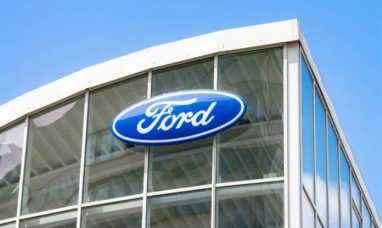Apple Stock (NASDAQ:AAPL)
Apple Inc. (NASDAQ:AAPL) bulls may have let out a sigh of relief when they heard that Foxconn (OTCPK:FXCOF), the Cupertino company’s primary iPhone Pro series contract manufacturer, has increased its production capacity to “90% of anticipated peak capacity.” Also, its staffing level has settled at 200K, which is a good sign for its Q2CY23 results (quarter ending March 2023).
Given the drop in production at the end of last year, the market has already downgraded Apple’s FQ1’23 earnings report (for the quarter that ended in December 2022) on February 2.
Apple bulls might say that the company led by Tim Cook is due for a comeback after having a 1Y total return of more than -30%, which is worse than the S&P 500.
Apple and its manufacturing partners deserve a lot of credit for getting production back up and running in time for the Chinese New Year. As a result of its quick reopening, supply chain problems and a COVID resurgence have caught many businesses off guard. It has also affected the supply chain of its auto industry, including the NEV leader BYD Company (OTCPK:BYDDF).
As a result, Apple CEO Tim Cook’s skills as the company’s former chief operating officer (COO) have been put to the test, even though Apple is expected to continue moving production away from China.
Munster Predicts a $250 Price Target for Apple
Gene Munster of Loup Ventures said that Apple would reach $250 by next year, which is an interesting prediction.
Munster is optimistic because he thinks Apple’s NTM P/E of 20.4x (10Y average: 17.6x) is too low compared to companies like Coca-Cola (NYSE:KO), which last traded at an NTM P/E of 25.4x (10Y average: 22.3x).
Investors should remember, though, that this isn’t the first time Munster has said that Apple should be worth $250. So, in a note from January 2022, Gene and the rest of the Loup team said that “2022 investor euphoria” meant that Apple should be worth $250.
Loup Ventures predicted that Apple would have $7 EPS in FY23, equivalent to a 35x implied earnings multiple. How did the forecast come to be? The company’s “metaverse and autonomy” progress should make investors happy.
But in his most recent commentary, Munster made it clear that he has yet to use these new categories to figure out how he feels about the stock right now.
What does this mean, then? Loup Ventures is one of the biggest fans of Apple. Consensus estimates for EPS in FY23 are $6.2, so Munster’s previous $7 estimates suggest a possible 13% outperformance. But does it make sense?
As was already said, since 2007, Apple hasn’t had a double-digit earnings surprise. Also, Wall Street’s average estimates of Apple’s earnings per share (EPS) have been very close to what Apple has reported (within 2%).
So, Apple is expected to have an EPS of $7.2 in FY25. This suggests that Munster’s optimism may be too high.
Notably, the market would have to raise Apple’s earnings multiple to more than 40x to reflect a $250 PT by the end of FY23 (which would mean a 100% upside). Loup Ventures’ “bombastic” comments about Apple, which has a 10Y total return CAGR of 22%, should not get investors too excited.
Also, what could be the source of his optimism if Munster doesn’t think Apple will release its mixed reality device or Apple Car in the next few years?
Why are investors so happy? Or, in 2022, will another group of overconfident bulls rush to buy Apple stock after it drops sharply from its all-time high?
Even though Apple has done better than Amazon (NASDAQ:AMZN) and Tesla (NASDAQ:TSLA) in 2022, its overvaluation has significantly hurt its performance. So, investors have mostly stuck with Apple because they think its execution, brand, and power as a gatekeeper will continue to make people want to buy its products, even though estimates for revenue growth are low.
Now that Foxconn’s Zhengzhou plant operations are likely back to normal, investors need to figure out if China’s growing demand will help it regain or gain market share in 2023 against its Android competitors.
Does it make a difference? Since Europe is likely to be in a recession and the US could go into one this year, it could be important for Apple that China’s economy is improving.
Almost 19% of Apple’s net sales in fiscal year 22 came from China. Apple’s market share in China’s premium segment has stayed strong, which is good for bulls. A recent report says that Apple’s market share in China went up by 1% to 22% in 2022, even though consumers were spending less.
So, when Apple moves to TSMC’s (NYSE:TSM) 3nm process node for the iPhone 15, Apple’s influence among high-end Chinese consumers may grow. Notably, it could give Apple more traction with its high-end customers worldwide, as Qualcomm (NASDAQ:QCOM) and MediaTek (OTCPK:MDTKF) are hesitant to commit to 3nm production because consumer tech spending is expected to drop.
So, Apple’s desire and commitment to stay ahead of its closest competitors may help extend and protect its pricing leadership. So, it’s probably too early to suggest that Apple change its iPhone 15 series prices in 2023, as its experience in China has shown. Even though the Chinese economy had a rough year, Chinese consumers have continued to choose Apple’s iPhone as their top choice.
Apple’s Biggest Problem Likely Not Fundamental
The most important question is whether investors think Apple’s big drop has reduced its near-term risks. Since the market looks to the future, market participants expected a relatively weak first-quarter report because they saw downside risks to consensus estimates.
But the most critical question is whether demand destruction will happen in FQ2 and beyond if the world economy worsens. It’s too early to tell, even though there seems to be a strong demand for the iPhone in general, as shown by the fact that it was able to gain market share in China in 2022.
So, Apple’s biggest problems are not likely to be fundamental. Instead, Apple’s relative valuation will continue to slow its rise if macroeconomic headwinds worsen.
But a stronger-than-expected rebound from China’s COVID cases’ earlier peak (which was predicted in late January) could help Apple get back on its feet faster. Because of this, Wall Street’s predictions, which most likely haven’t been considered a strong recovery, may have some pleasant surprises.
So, even though I still think Apple’s momentum is going in the wrong direction, the risk/reward ratio is pretty good for now. But if Apple stock falls further to $100 and is strongly supported, it could be a good place for buyers waiting on the sidelines.
Featured Image: Pexels @ energepic.com

















